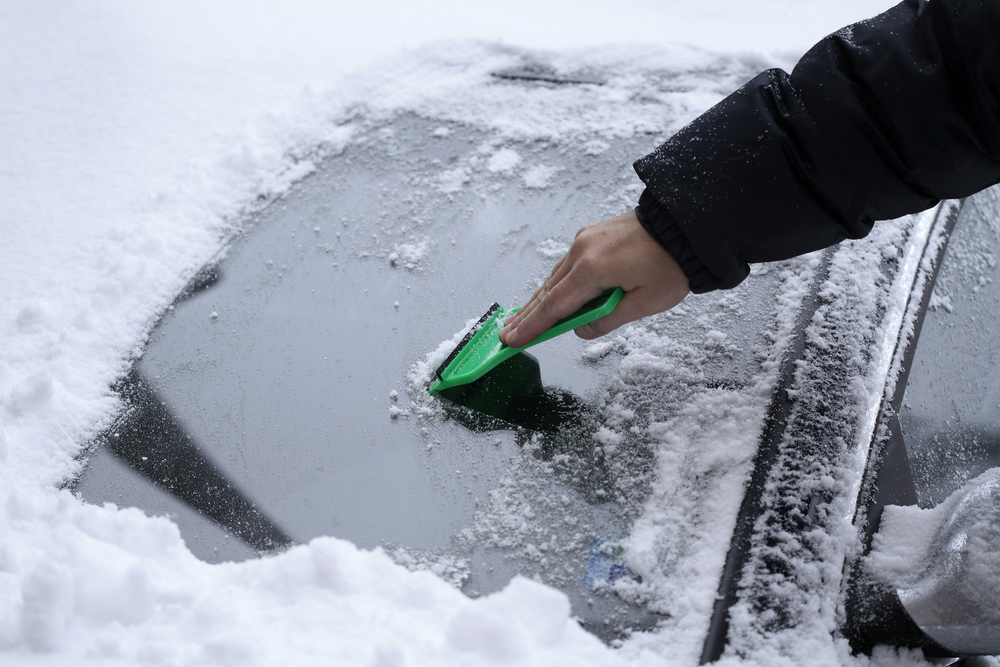

During the cold days of winter, if you’re not using a windshield snow cover, you’re likely to find your car sporting a layer of ice or even snow when you head out in the morning.
Beyond just pulling out a scraper (or a credit card if you’re desperate), you can try a few other ways to clean things off. Here are the best ways to rescue your car when it gets snowed or iced in—and a few techniques you should avoid.
Warm up the car
Before you break out that ice scraper, take a minute to help your car help you. Turn it on, switch on the heat, and activate the front and rear defrosters. Not only will that make your vehicle nice and toasty when you’re ready to get inside, but it will ease the process of removing all that caked-on ice.
Try hand sanitizer
If you’re having trouble opening your car door or freeing those wipers, says Mike Sample, lead driving safety expert and technical consultant at Liberty Mutual Insurance, try applying a little hand sanitizer. Because alcohol has a lower melting point than water, this can help thaw some of the frozen gunk. Sample says applying a little bit to the door handle or lock can be just what you need to free them up.
Clear everything
Don’t just create a peephole for yourself. When it comes to snow and ice, you need to clean off your whole car. It might be a pain to remove slush from your roof and trunk as well as the windshield, but when you drive, that snow could fall off and create a hazard for everyone on the road. Take the time to remove everything before you get behind the wheel.
And make sure to do all that cleaning with a plastic scraper. While shovels and other metal tools are great for clearing sidewalks and porches, using them on your car can leave scratches and dents on your vehicle.
Avoid hot water and salt
A quick internet search for ways to free your car will reveal that some people think it’s a good idea to use both hot water and salt in the process. You should avoid both.
Sample warns that putting hot water on your windshield can potentially cause the glass to crack, because it produces such a quick change in temperature. And if it’s really cold outside, that hot water could even turn into yet more ice.
He also opposes salt. “Although salt is good for the pavement, it will erode the car paint and metal, and damage the vehicle,” Sample says. Save your salt for your sidewalks, and rely on elbow grease to get your car clean.
One surefire way to speed up the cleaning process: If you have the option, always park your car in a garage or other covered spot. That way, you can avoid having to rescue it in the first place.
Watch your wipers
This one requires some foresight: Before inclement weather strikes, prepare for winter by putting high-quality windshield wipers on on your car. If this week’s weather caught you off guard, then there’s always next time.
“Good wipers are your best defense against snow,” Sample says. “If the wipers left streaks during fall rains, be sure to change the blades before those drops turn to flakes.” He also recommends that, as soon as winter kicks into gear, you swap out your windshield wash for a variety that remains liquid in below-freezing temperatures.
If you anticipate precipitation the next day, it’s also a good idea to prop up your wiper blades before you go to bed, so they won’t get buried in the snow. This ultimately makes it easier for you to clean your windshield in the morning, and also helps you prevent damage to your wiper motor once you do turn the blades back on.
This article was first published on December 22, 2018. It has been updated.
